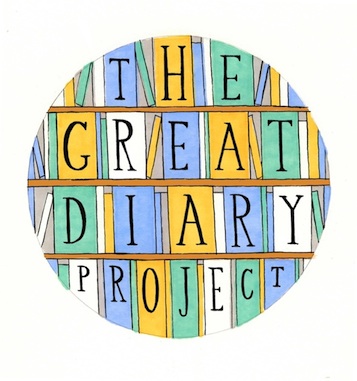
BEASTLY SNEAKS: Based on the idea of creating a diary archive, where people can send personal collections of diaries to be securely stored for future reference, below is a record of diary related stories and ideas... 'Beastly Sneaks' is a phrase taken from the diary of the young Godfrey Williams, 1887, which opens with the warning: "Take Notice - All persons who look at this diary without my leave are Beastly Sneaks..."
Tuesday 16 October 2012
The Pursuit of Parallels
Saturday 25 August 2012
The Dioramas
http://www.youtube.com/watch?v=rhi9xKGGWX8&feature=plcp
Thursday 14 June 2012
The Orphan Diaries
Isabella was also friends with the phrenologist George Combe, who diagnosed her as being highly 'amative' after inspecting the shape of her head. This cast a shadow over Isabella, who from then onwards in her diary refers to her sexuality as if it were scientifically proven to be abnormal. Isabella’s diary was part of this era of experimentation and reveals the infancy of a more modern vision for female sexuality and the role of women. In writing this book, Summerscale felt that finally: ‘we could read her diary in a way that the Victorians could not have done. I wanted to be the reader she was reaching for".
Tuesday 10 April 2012
What do scout girls do? "We'll have a gay time"

I was first bewitched by scout diaries after discovering one for sale on eBay, with a tantalizing page that read in large chaotic child's handwriting: 'Lost kite up a telegraph pole'. The scout diaries from our collection reveal another world through the smallest amount of information, leaving the imagination to fill in the rest. Like a heavy velvet curtain of the past drawing up, behind which the scouts can be found playing out their days in an era of innocent games, churchgoing and role models, where best friends have nicknames like Hoppie Pantyweist and Pussy Cummings.
An 8 year old from Norfolk, called Jean, has a section in her scout diary where she is meant to list 'Entertainments I have been to' - instead she writes in capital letters underlined in thick black ink, the boldest stand-out statement of the entire diary: 'I do not go to such things I am a religious Minister's daughter'. Alongside moral guidelines and attempts to 'do a good deed every day' dark undercurrents emerge. The diary of a 12 year old girl scout, called Kay, from Massachusetts, in 1937 is pepped up with Coca-Cola and visits to the movies, as well as casual remarks that reveal the prejudices of the time, ingrained in her culture:
September 30th 1937
Jigg's birthday. Played a game of field hockey. That's a wonderful game! Lost 3 pounds since school started Believe it or Not Ripley. Dartmouth play Amherst Sat. Got a letter from Dovie. She is a Jew. I wasn't sure before.
At the back of Kay's diary there are song lyrics from the 1927 musical 'Show Boat' about the struggles of African Americans in the US at the time. The lyrics to this song were changed several times during this period as people debated the use of the word 'nigger'. Kay chooses to stick to the original and records it in the diary perhaps for singing around the campfire on a balmy night with Pussy and Hoppie:
Niggers all work on the Mississippi,
Niggers all work while de white folks play,
...Don't look up an' don't look down
You don' dar'st make de white boss frown
Bend your knees an' bow your head
An' pull dat rope until you're dead
Monday 30 January 2012
Strange Spells in Illinois
 A collection of diaries from the 1870s - 1900, kept by a landlady called Ms Love, who ran a boarding house in Carbondale, Illinois, begin as a robust, domestic account of the residents coming and going: "buckwheat cakes and coffee for breakfast as usual"... laundry arriving by sled in the snow, making peach shortbread and pickled beans. Lodgers take tea and supper together and play music afterwards in the front parlour, usually the weather is storming outside with severe Southern thunder and gales - often it's "too cold to quilt".
A collection of diaries from the 1870s - 1900, kept by a landlady called Ms Love, who ran a boarding house in Carbondale, Illinois, begin as a robust, domestic account of the residents coming and going: "buckwheat cakes and coffee for breakfast as usual"... laundry arriving by sled in the snow, making peach shortbread and pickled beans. Lodgers take tea and supper together and play music afterwards in the front parlour, usually the weather is storming outside with severe Southern thunder and gales - often it's "too cold to quilt". 

